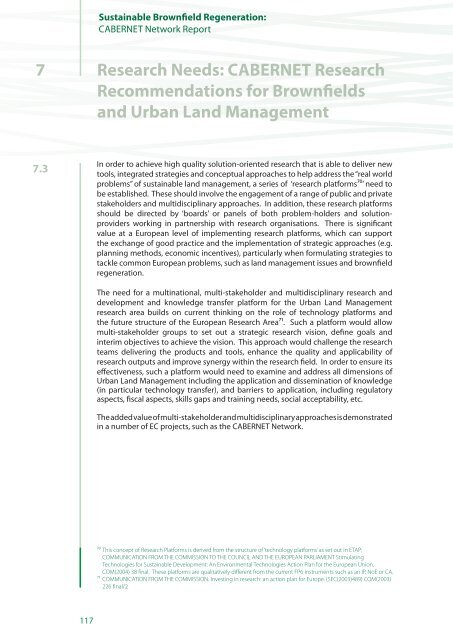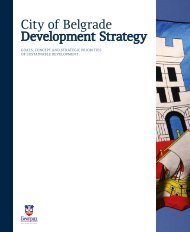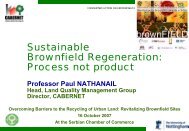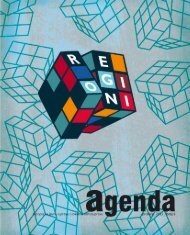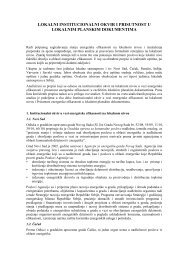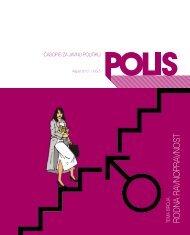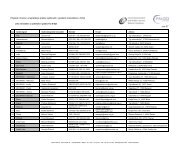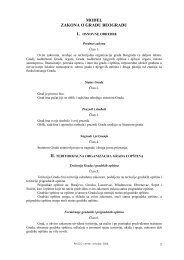Sustainable Brownfield Regeneration: CABERNET Network Report
Sustainable Brownfield Regeneration: CABERNET Network Report
Sustainable Brownfield Regeneration: CABERNET Network Report
Create successful ePaper yourself
Turn your PDF publications into a flip-book with our unique Google optimized e-Paper software.
<strong>Sustainable</strong> <strong>Brownfield</strong> <strong>Regeneration</strong>:<strong>CABERNET</strong> <strong>Network</strong> <strong>Report</strong>7Research Needs: <strong>CABERNET</strong> ResearchRecommendations for <strong>Brownfield</strong>sand Urban Land Management7.3In order to achieve high quality solution-oriented research that is able to deliver newtools, integrated strategies and conceptual approaches to help address the “real worldproblems” of sustainable land management, a series of ‘research platforms⁷⁰’ need tobe established. These should involve the engagement of a range of public and privatestakeholders and multidisciplinary approaches. In addition, these research platformsshould be directed by ‘boards’ or panels of both problem-holders and solutionprovidersworking in partnership with research organisations. There is significantvalue at a European level of implementing research platforms, which can supportthe exchange of good practice and the implementation of strategic approaches (e.g.planning methods, economic incentives), particularly when formulating strategies totackle common European problems, such as land management issues and brownfieldregeneration.The need for a multinational, multi-stakeholder and multidisciplinary research anddevelopment and knowledge transfer platform for the Urban Land Managementresearch area builds on current thinking on the role of technology platforms andthe future structure of the European Research Area⁷¹. Such a platform would allowmulti-stakeholder groups to set out a strategic research vision, define goals andinterim objectives to achieve the vision. This approach would challenge the researchteams delivering the products and tools, enhance the quality and applicability ofresearch outputs and improve synergy within the research field. In order to ensure itseffectiveness, such a platform would need to examine and address all dimensions ofUrban Land Management including the application and dissemination of knowledge(in particular technology transfer), and barriers to application, including regulatoryaspects, fiscal aspects, skills gaps and training needs, social acceptability, etc.The added value of multi-stakeholder and multidisciplinary approaches is demonstratedin a number of EC projects, such as the <strong>CABERNET</strong> <strong>Network</strong>.⁷⁰ This concept of Research Platforms is derived from the structure of ‘technology platforms’ as set out in ETAP;COMMUNICATION FROM THE COMMISSION TO THE COUNCIL AND THE EUROPEAN PARLIAMENT StimulatingTechnologies for <strong>Sustainable</strong> Development: An Environmental Technologies Action Plan for the European Union.COM(2004) 38 final. These platforms are qualitatively different from the current FP6 instruments such as an IP, NoE or CA.⁷¹ COMMUNICATION FROM THE COMMISSION. Investing in research: an action plan for Europe. {SEC(2003)489} COM(2003)226 final/2117


